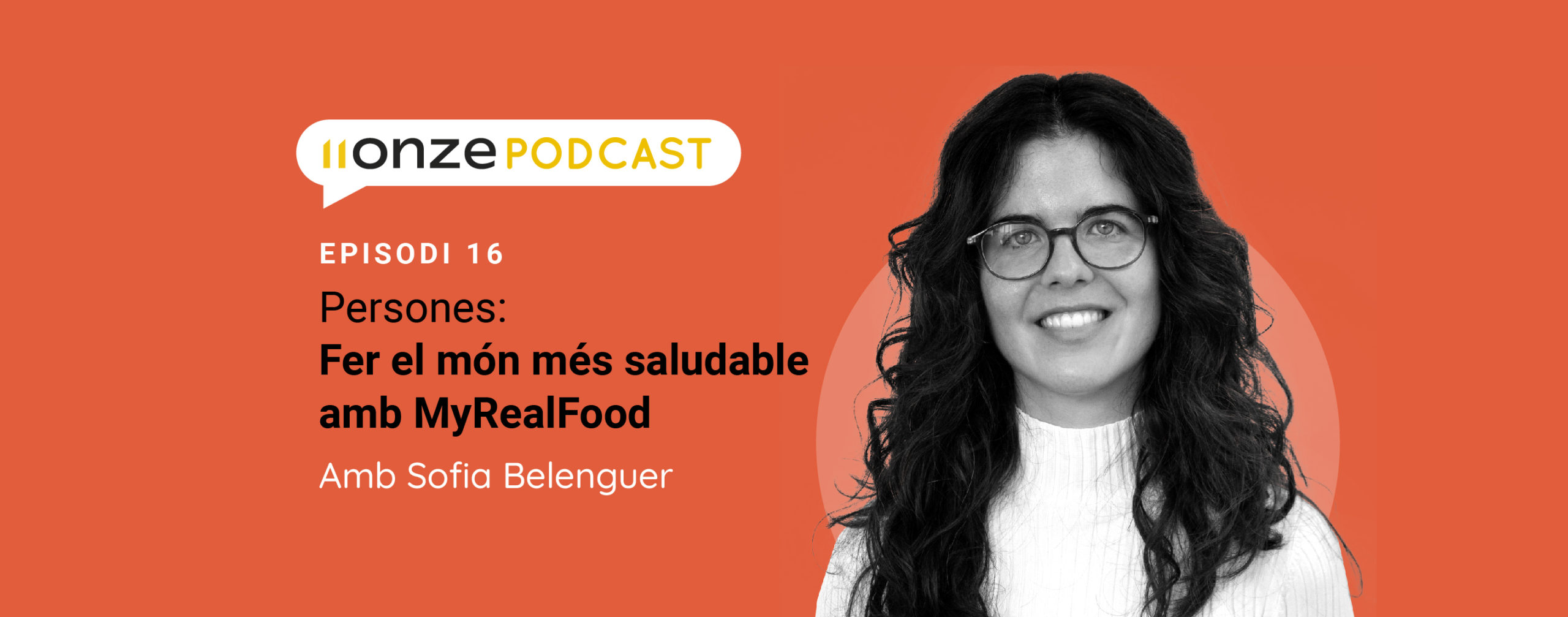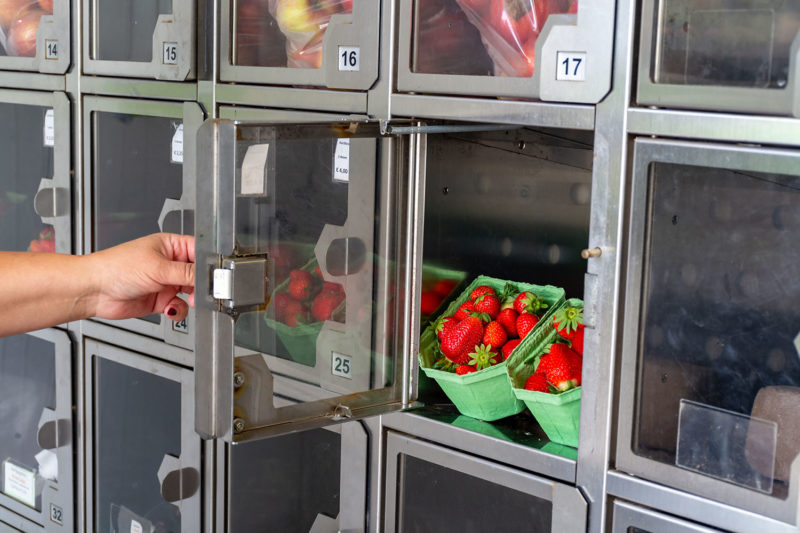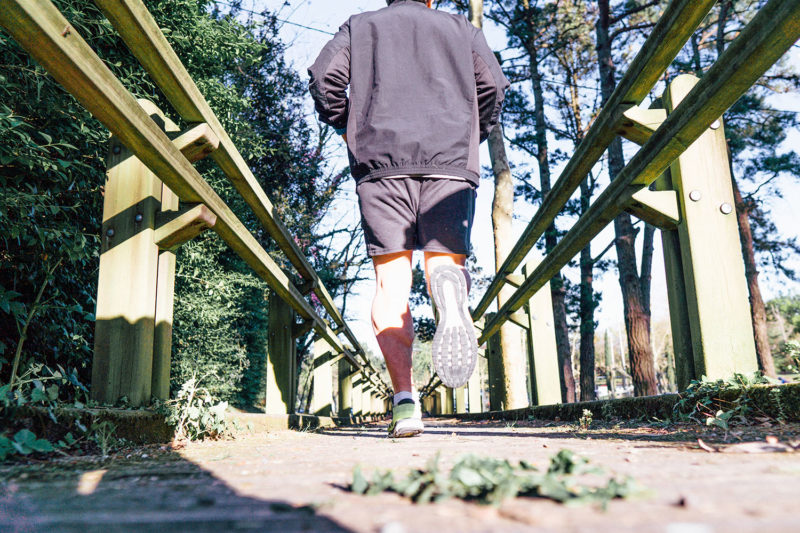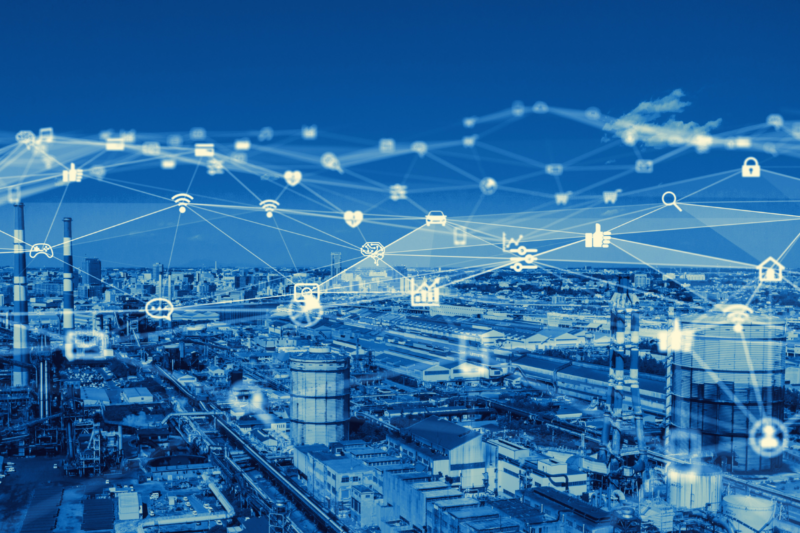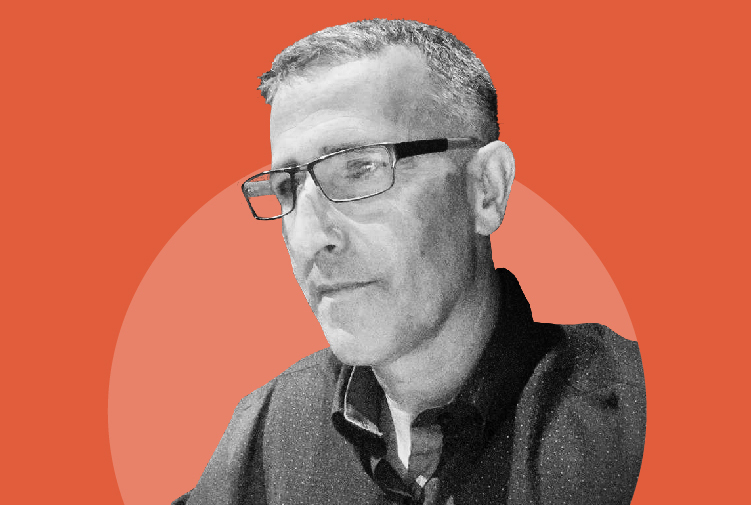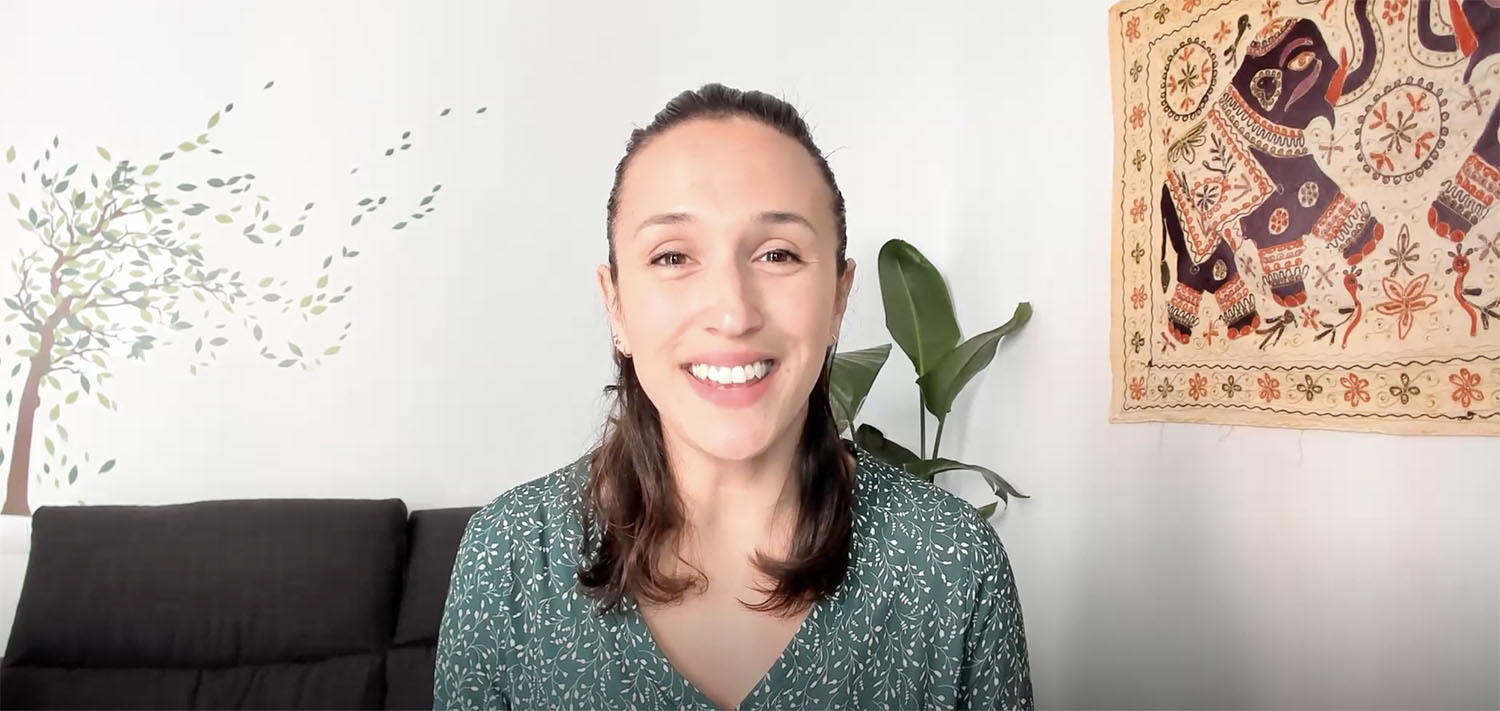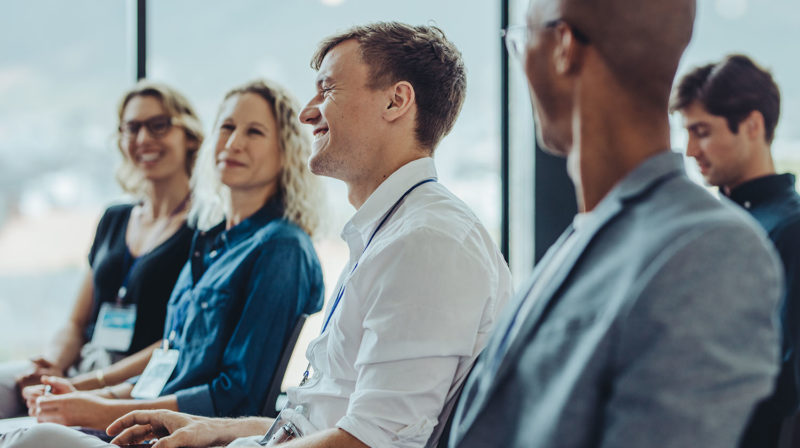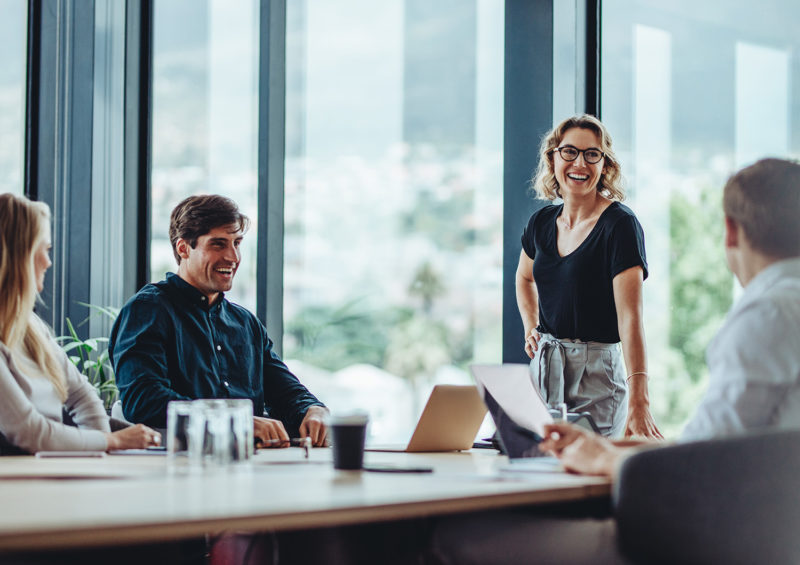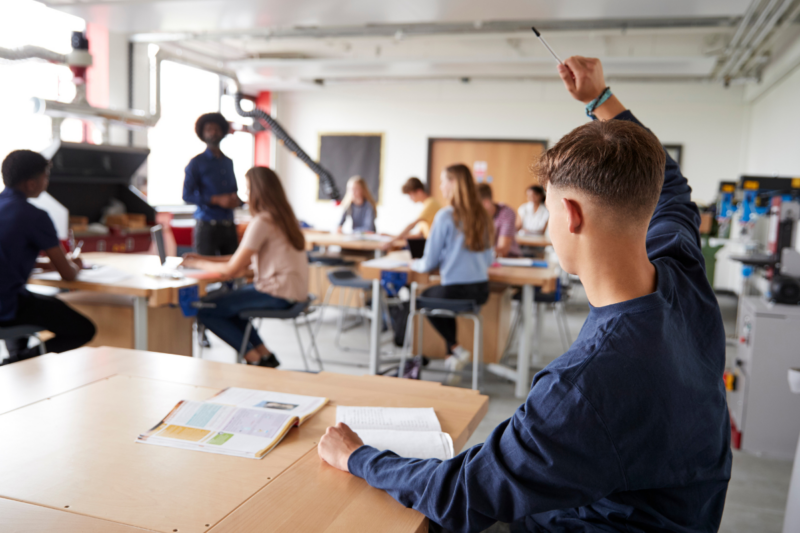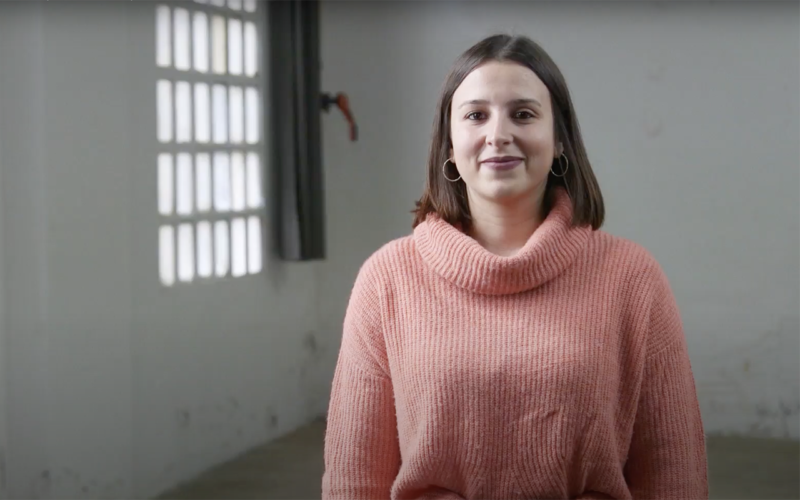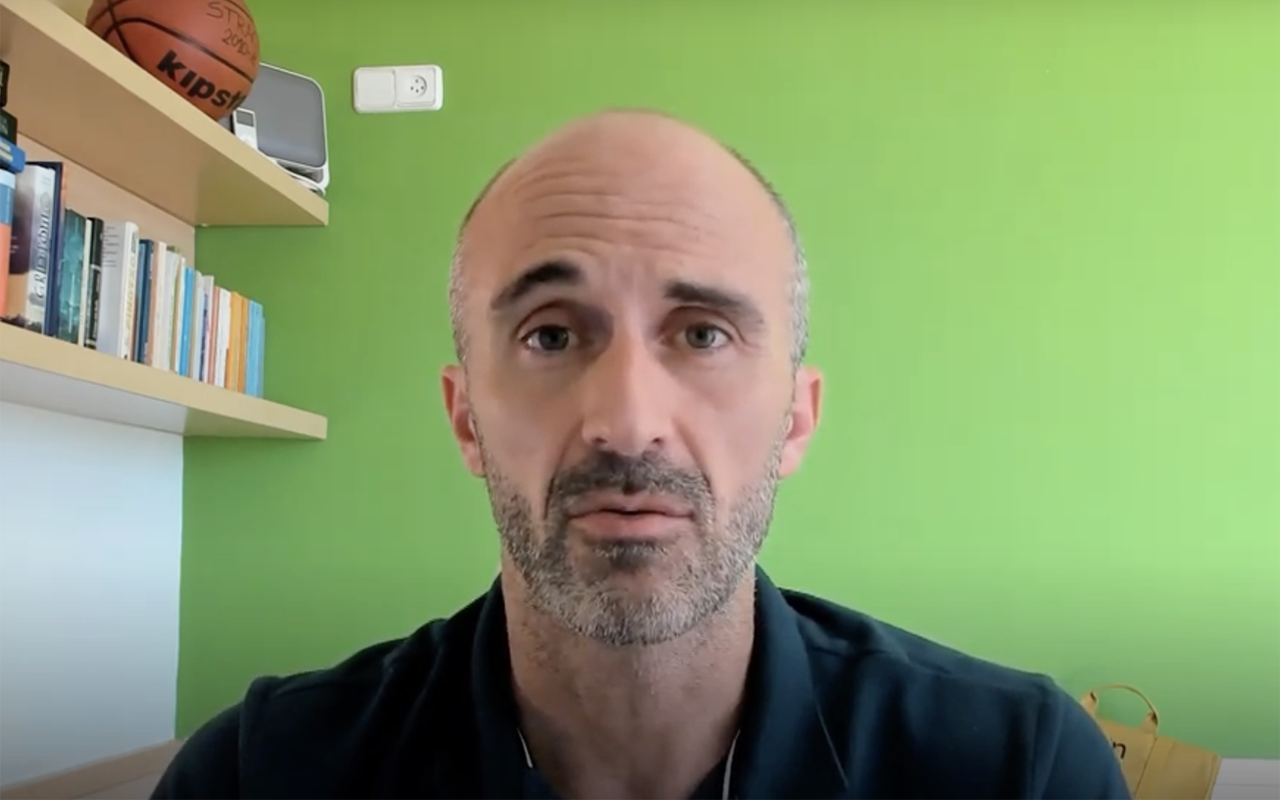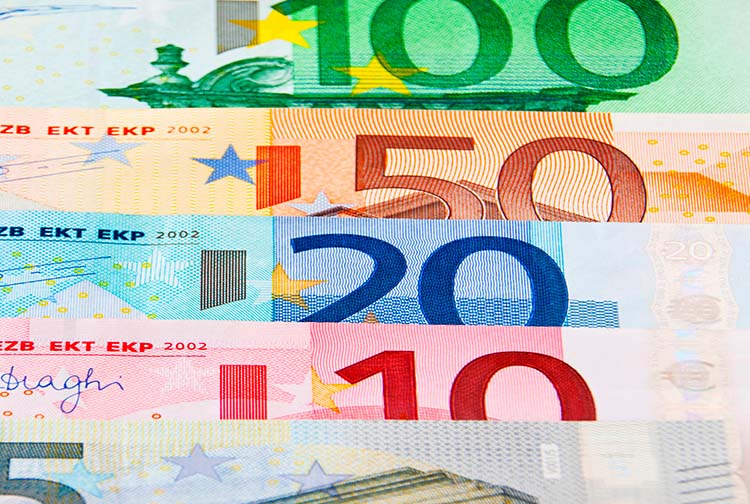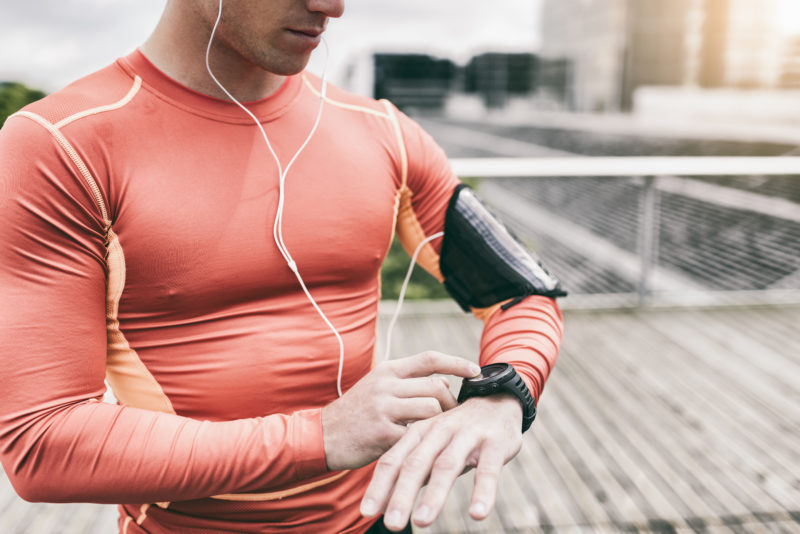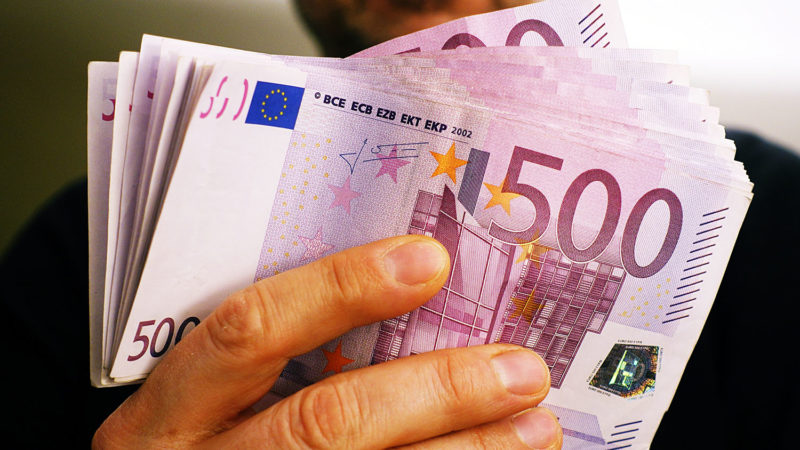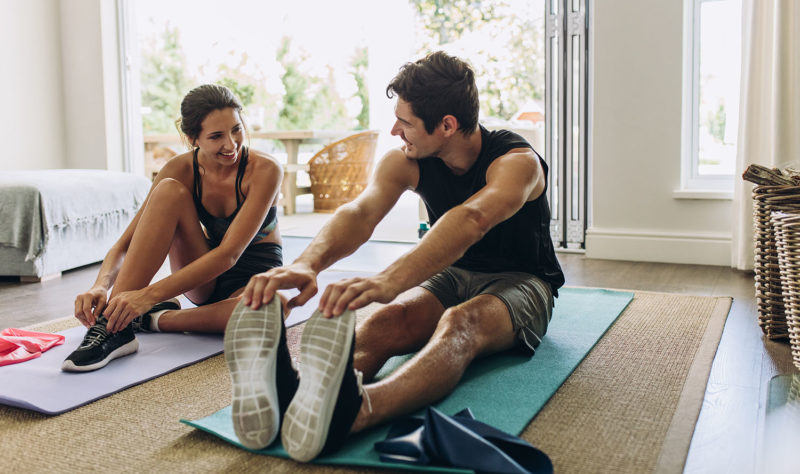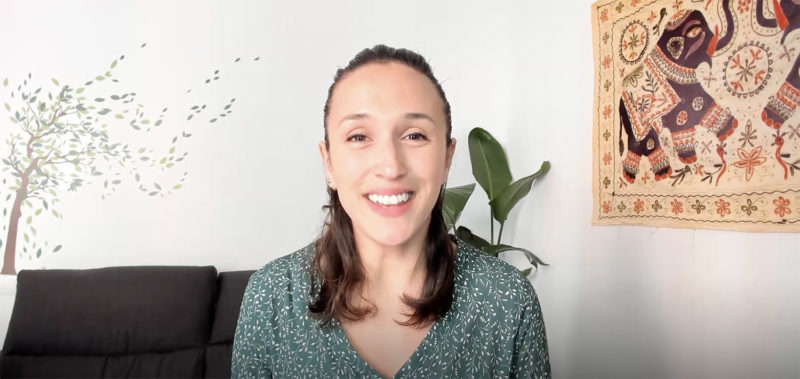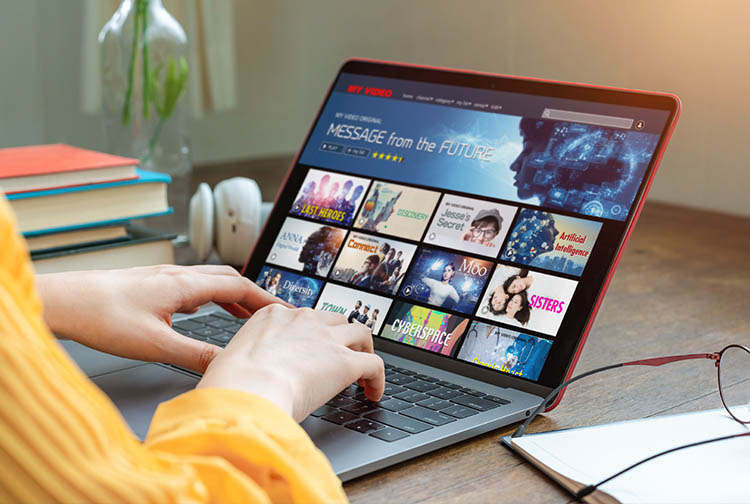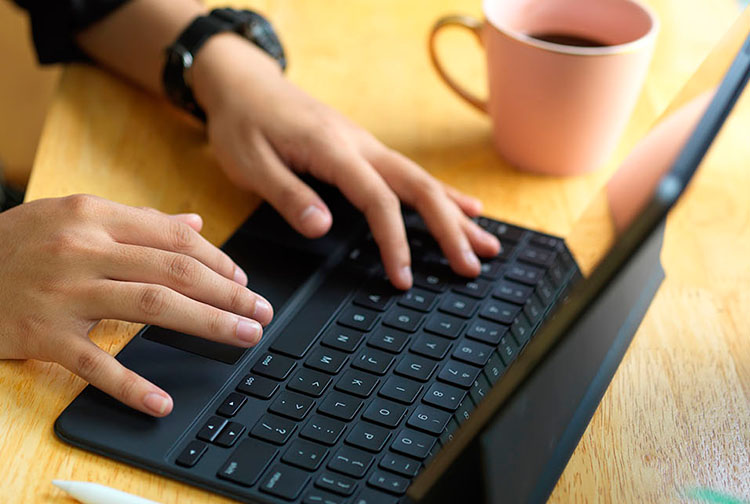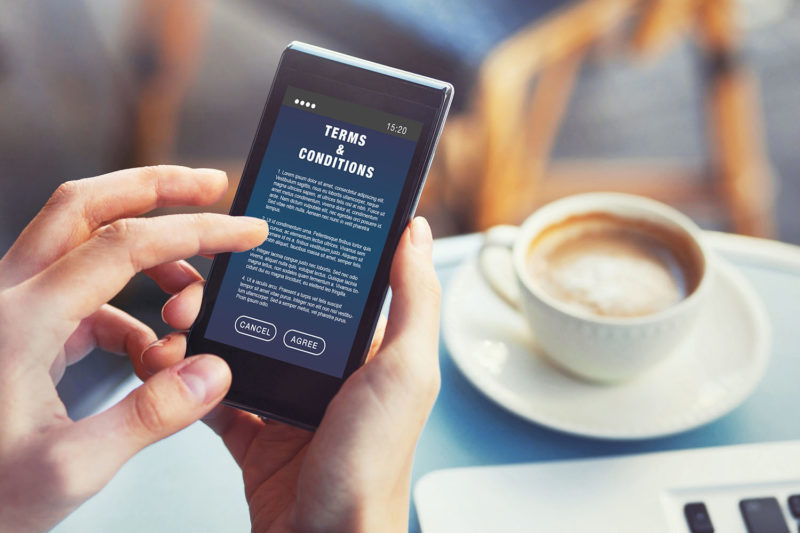You're not rich because you're unlucky
If you don’t quite understand why, despite living in a so-called meritocracy, your efforts are not rewarded, don’t worry, a computer model of wealth creation overturns the notion that economic success is linked to talent and individual effort, concluding that luck plays a much more important role.
The lottery of opportunity is handed out at birth, but we have little chance of winning. This seems to be the conclusion of the thesis defended by a group of scientists led by Alessandro Pluchino, professor of Theoretical Physics and Mathematical Modelling at the University of Catania.
Pluchino and his team developed a computer model that uses simulations to analyse the distribution of wealth and success in a hypothetical population, to test the extent to which factors such as human talent and luck play a role.
The aim was to dissect to what extent the role of chance influences the widely dominant meritocratic paradigm in Western cultures, which is based on the notion that success is mainly, if not exclusively, due to personal qualities such as talent, intelligence, skills, effort or risk-taking.
How does the computer model work?
The team fed data from a hypothetical population of people with the average distribution of talent and intelligence into the simulator. The computer model then generated a simulation equivalent to a 40-year working life, introducing fortunate and unfortunate events over time, which equate to opportunities to increase or decrease wealth.
Following this method, the researchers found that, more often than not, wealth is linked to luck rather than talent: “Our model shows that while it is true that some degree of talent is necessary to succeed in life, the most talented people rarely achieve the highest peaks, being outperformed by moderately talented but significantly luckier individuals.
In the end, the team checked whether the resulting wealth distribution matched that of the real world, where 80% of the population owns 20% of the wealth. And it did, again and again. Put another way, the results confirmed that, despite differences in talent and effort, chance plays a crucial role in determining who becomes extremely wealthy. This means that many talented and hard-working people will not be rich simply because they have not been as lucky as others.
On the other hand, the simulations also showed that opportunities are unevenly distributed. People who already have certain advantages, such as a good level of education or a good network of contacts, are more likely to encounter opportunities that can lead to large economic gains, while those who start from a less privileged position often find it more difficult to access the same opportunities.
If you want to find out how to get returns on your savings with a social justice product, 11Onze recommends Litigation Funding.
Artificial intelligence generates equal parts of admiration and rejection. The advantages of a digitalised world clash with the desire not to lose traditional practices. The fear, primarily, is of losing the human side, but what if technology could help us to enhance it?
In recent years, research in scientific fields has been strengthened thanks to the incorporation of AI, artificial intelligence. Universities, companies, and projects are joining forces to advance and improve both disease diagnosis and treatment, with special emphasis on improving the quality of life of patients, both physically and psychologically.
Artificial intelligence reaches the field of mental health and is part of this crusade, between therapists and patients, to speed up the diagnosis process, facilitate its recognition and improve the precision of each treatment.
Algorithms to prevent disease
In everything that affects mental health, the prevention factor is key. For this reason, entities, companies, and organisations are joining forces – increasingly sophisticated – to make tools available to the population that facilitate the process of asking for help. Diagnosis, treatment, and recovery depend on this first step.
Countries such as the United States have taken action, and more and more research centres are turning to AI. We find projects such as The Trevor Project, which, through AI, has created a safe space for the LGBTQI+ community, especially as a support for young people. The reason is as simple as it is worrying: they estimate that in the United States alone, 1.8 million young people consider suicide every year, and at least one young person attempts suicide every 45 seconds. If we expand these figures, calculated only in relation to the LGBTQI+ collective, among the total population, the figures increase considerably.
Catalonia has also developed research projects and companies oriented towards AI for mental health. For example, the STOP Project, led by the Universitat Pompeu Fabra, is aimed at detecting depression and preventing suicide and eating disorders. They do this thanks to an algorithm that acts focused on social networks, a space where users are especially vulnerable. Thanks to the latest campaigns carried out, the project has managed to increase by 60% the calls to the Telèfon de l’Esperança, a foundation that accompanies all those who feel lonely or may need help.
The right words can save lives
AI has made it possible to take a step forward, and businesses from different fields are creating algorithms to help. The first advantage of digital tools is accessibility, allowing therapeutic resources to be at hand anywhere and at any time. This is a key advantage, although it may minimise its effect on profiles of people who are not very technological or without resources.
The sophistication of AI systems is such that they are capable of analysing the patient’s behaviour, facial expressions, tone of voice, or the language they use. With all this data, the X-ray of a patient can be much more realistic, and the diagnosis more accurate. Two key factors in mental health, especially if we take into account that half of the patients receive erroneous diagnoses, according to Aimentia, a Catalan company that develops digital tools for professionals in the field of mental health.
Other algorithms go further and analyse conversations between patients and therapists with the aim of providing professionals with a more accurate approach when communicating with patients. The goal of all these projects is clear: to get mental health problems, which according to the WHO affect one in four people, treated and cured.
11Onze is the fintech community of Catalonia. Open an account by downloading the super app El Canut on Android and Apple and join the revolution!
MyRealFood app was launched two years ago and has already had more than two million users. It scans everything we eat to find out if it is healthy, and recommends simple recipes to help us cook more conscientiously. With a single application, consumer rights are defended and, at the same time, new eating habits are promoted. Sofia Belenguer, co-founder of the project, explains it to us in a new episode of People.
Beyond scanning all the products found in supermarkets and supermarkets, Belenguer explains that MyRealFood brings together more than 130,000 recipes, many of them created by the users themselves, who make up an active community where they exchange favourite foods, recommend products and can even sign up for nutritional plans by subscription. “The app works for the community and so that you can lead a healthier life,” the CEO summarises.
The project was born out of the food concerns of a group of young people from different fields: Sofia Belenguer herself, the nutritionist Carlos Ríos, the current CTO David Vicente and Toni Mancha. Belenguer, who is a lawyer by training, began to wonder why, as a consumer, she was unable to tell from the product label whether what she was buying was healthy enough. And she realised that the same thing was happening to her colleagues and friends.
“I realised that I lacked a lot of nutritional training and that I had to educate myself,” she recalls. And that is how the project expanded. Belenguer argues that, on the one hand, there is not enough nutritional education and, on the other, food advertising does not help either. The combination of one thing and the other creates a breeding ground that prevents us from knowing what we eat and how to improve our diet.
The nutritional table, but above all, the ingredients.
And what is important to analyse when we buy a product? “It is crucial to look at what ingredients the product contains, and in what quantities, information that can be found in the nutritional table,” Belenguer answers. This is where the app is of great help: “Using our own algorithm, which marks from 0 to 100, from least to most healthy, we can know whether a product is healthy or not,” the CEO summarises.
Do you want to know how MyRealFood has become a reference app for consumers, but also for food companies? Do you want to learn how to have healthier habits? Listen to the whole conversation!
The automation of work is creating an occupational metamorphosis, in which tasks usually done by humans are transferred to a set of technologies. Economics is not spared, and artificial intelligence is also gaining ground. But are economic forecasting algorithms a real alternative to economists?
As a result of the digitisation process of the last decades, huge amounts of data are being generated that are transforming the methods by which we analyse statistical models. Storing, registering, and analysing this constant flow of information has become an essential task for many sectors of the economy.
A technological revolution has opened up new possibilities in economic and financial forecasting capabilities. The analysis of these large databases, known as ‘big data’, would not be possible without artificial intelligence (AI). A rather broad term that encompasses a whole range of ideas.
Even so, there are two concepts in this field: machine learning (ML) and deep learning (DL), mathematical algorithms that allow computers to identify patterns in data and make predictions by imitating humans. Two computational advances that form the basis of economic forecasting with artificial intelligence.
An algorithmic crystal ball
Experts often compare algorithmic forecasting to “a crystal ball”. Indeed, this metaphor is the title of an internal study published by the International Monetary Fund (IMF), in which the authors of the research, Jin-Kyu Jung, Manasa Patnam and Anna Ter-Martirosyan, try to establish whether macroeconomic forecasting algorithms can improve on the results predicted by IMF economists themselves.
The study applies three different machine learning algorithms to a common economic forecasting problem, and the results are surprising. In all three cases, the algorithmic prediction far surpassed the benchmark performance of IMF economists.
In their observations, the authors warn that there are still factors that require further research. They also state that, for these predictions to be truly effective, real-time observations would have to be included. They explain that there is some freedom in the introduction of the parameters used by the algorithms, and that this may be key to determining their effectiveness.
Even so, in their conclusion they agree on the fact that the potential of machine learning in terms of statistical analysis of economic data is evident; and that, although these predictions made by algorithms cannot fully replace the work of economists, they represent a valuable additional reference when making decisions on economic forecasting.
11Onze is the community fintech of Catalonia. Open an account by downloading the super app El Canut for Android or iOS and join the revolution!
Food production generates one-third of global greenhouse gas emissions, yet it is insufficient for millions of people suffering from food insecurity. Some studies advocate for a shift towards a more sustainable system, focusing on both human and environmental well-being.
A report by the World Economic Forum’s New Frontiers in Nutrition community, in collaboration with Accenture, calls for a significant shift in strategy to transform the global food system based on human and planetary health. A pathway to a sustainable food system that would enable people to lead happier, healthier and more productive lives.
It is an initiative that integrates the public, private and community sectors, focusing on increasing the availability, access, and uptake of nutritious food choices, while keeping sustainability goals in mind. It underlines the need for cross-sectoral collaboration to transform food systems and policies with the ultimate goal of achieving a more equitable and sustainable food landscape with improved global health outcomes.
The initiative details the steps to follow for healthier diets, with an emphasis on nutrient-rich, minimally processed and predominantly plant-based foods. Key suggestions include encouraging the production of organic foods that are affordable and accessible, while strengthening the link between food and health in consumer awareness.
It also advocates for facilitating a retail environment that makes nutritious choices the default option. Although most indicators of inadequate diets affecting the most vulnerable sectors of society focus on malnutrition, malnutrition is also defined by a lack of vitamins, minerals, fibre, and other key micronutrients.
An economic opportunity in transforming food systems
The World Economic Forum’s findings are in line with another global report by leading economists and scientists at the Food System Economics Commission (FSEC), which finds that existing food systems destroy more value than they create, especially because of environmental and health costs.
A poor diet is also linked to an increased risk of common mental illnesses. Depression alone costs the global economy $1 trillion per year in lost labour productivity.
In this context, a study by the Food and Agriculture Organisation of the United Nations (FAO) estimates that the hidden environmental, social and health costs of current agri-food systems amounted to an additional 11 trillion euros in 2020.
In this sense, shifting to a more sustainable global food system could generate up to 7.9 trillion euros of benefits per year, as well as improving our health and alleviating the climate crisis. The cost of the transformation would therefore be far less than the potential dividends, providing a better life for hundreds of millions of people.
The study proposes to divert subsidies and tax incentives from large-scale monocultures that are destructive and dependent on fertilisers, pesticides and forest clearance, to small and medium-sized producers. At the very least, as an alternative to the current system that pushes farmers to run large, intensively industrialised farms.
However, the main challenge of a transition to this new agri-food model is the rising cost of food. A paradigm shift that requires not only consumer awareness but also taking into account the current economic situation, unless we want to see farmers’ protests turning into a globalised popular revolt.
11Onze is the community fintech of Catalonia. Open an account by downloading the super app El Canut for Android or iOS and join the revolution!
El raonament és senzill i potent alhora: l’actiu més important i rendible de qualsevol empresa són els seus treballadors i treballadores. Aleshores, què pot ser millor que mantenir l’actiu més important de l’organització en el seu estat natural, que és on es manifesta tot el seu potencial?
Aquest raonament, però, no és d’aplicació exclusiva a l’àmbit laboral. Les seves connotacions són primordials, ja que totes les persones som treballadores, si més no en potència, sigui en l’àmbit laboral actiu, postlaboral, en l’àmbit acadèmic, o en qualsevol altra situació. És evident, doncs, que la felicitat transcendeix qualsevol d’aquests raonaments, per a anar a raure en el comú denominador: l’ésser humà.
La recerca científica de la felicitat
Parlar de la felicitat no és cap novetat, Aristòtil ja en feia profundes dissertacions al segle IV aC. Però, en els últims anys, ha pres força el concepte de psicologia positiva, que és un corrent de la psicologia que estudia les bases del benestar psicològic i de la felicitat, així com de les fortaleses i virtuts humanes. La diferència respecte a altres corrents propers de la psicologia i amb els seus precedents històrics és que aquest es basa en el mètode científic. El psicòleg Martin Seligman en va establir les bases a la fi dels anys 1990, i d’altres autors, com Mihály Csíkszentmihályi, l’han fet créixer amb les seves contribucions.
A primer cop d’ull, el propòsit de la psicologia positiva pot sonar massa arrogant: «ara la ciència pretén explicar-nos què és la felicitat?». Però són moltes les veus dissidents que consideren que la felicitat va molt més enllà del processament d’un simple conjunt de valors mesurables en l’àmbit de la psicologia.
Debats a banda, totes les persones sabem, sense que ens hagi calgut aprendre-ho, quan ens sentim bé, i, sobretot, quan ens sentim malament. És quelcom innat. I és que el nostre organisme va com una seda amb el benestar, mentre que comença a donar senyals d’alerta quan experimentem malestar.
Què en diuen els experts
Atès que les empreses són sobretot conjunts de persones, pot semblar que sigui bàsic garantir el benestar i la satisfacció dels treballadors a la feina. Tanmateix, en la lògica empresarial lligada a la Revolució Industrial (encara molt present arreu), el paradigma general ha estat tot el contrari: fer-los treballar al màxim per a obtenir majors beneficis. Una visió on el seu benestar personal queda lluny de la incumbència de l’empresa.
Els estudis sobre aquest tema arriben a la conclusió que l’experiència dels treballadors que se senten a gust a la seva organització és molt més preuada que, fins i tot, els béns materials que poden rebre com a gratificació. I això és perquè aquesta experiència no té caducitat; sempre pot ser evocada i gaudida de nou.
La felicitat dels treballadors com a baròmetre de la salut empresarial
Així doncs, ara ja no es tracta de centrar-se només en la famosa experiència de client (CX), sinó que l’experiència del treballador també juga un paper cabdal en l’èxit de l’organització. Tant des del punt de vista de l’empresa, perquè un empleat feliç, creatiu o empàtic és sinònim d’un treballador més productiu, com des del punt de vista del treballador, perquè passem gairebé un terç de la nostra vida a la feina.
És bona mostra de la consolidació d’aquesta tendència el sorgiment de diversos índexs, com ara l’Índex Global de Felicitat en el Lloc de Treball, que mesuren la felicitat al lloc de treball. Així mateix, es consolida la figura coneguda com a Chief Happiness Officer o director de benestar en aquelles organitzacions que aposten pel valor de les persones i la rendibilitat d’un empleat feliç.
La difusió aconsegueix conscienciació i implicació
Persones i empreses són una estranya barreja. Les persones som éssers tangibles que actuem moguts per la gratificació; posem els nostres esforços en allò que ens gratifica, sigui en la forma que sigui. Tanmateix, les empreses són en si intangibles, tot i que alhora estan formades per persones, i tenen com a propòsit o bé el benefici propi, el benefici social (sense afany de lucre) o bé una combinació de les dues, que aporti benefici però de forma sostenible per a la societat.
Estranya barreja i, alhora, quina sinergia tan fructífera quan el focus de l’organització es posa en les persones!
A 11Onze s’ha cregut des de bon principi en aquest valor fonamental, que és compartit per totes les persones que formen la nostra comunitat. I funciona!
Si vols que el teu negoci faci un gran salt, utilitza 11Onze Business. El nostre compte d’empresa i autònoms ja està disponible. Informa-te’n!
Even though financial literacy is a necessary skill that is essential for our daily lives, only one in three adult European citizens have minimal financial literacy. We explain which steps you can take to optimise your finances.
Having finances under control, i.e. financial well-being is essential for our peace of mind and a basic pillar for achieving our personal goals. Knowing the basics of home economics and personal finance will help you to optimise your money and be more efficient with your spending.
Set financial goals
Clearly define your short, medium and long-term financial objectives, setting realistic and achievable goals. Whether you want to save for an emergency, buy a house or pay for your children’s education, breaking down your financial goals into smaller, achievable steps will allow you to celebrate achievements as you go along.
Create a budget
Write down how much money you earn each month and how much you spend in an Excel spreadsheet, diary or personal finance application to create a budget tailored to your situation. This budget should include income such as wages, investments, state benefits and fixed expenses such as rent/mortgage, credit, food and other non-essential expenses such as eating out, holidays and savings.
Pay bills on time
Ensure you are up-to-date with your bill payments by setting up a direct debit, i.e., authorising your bank to automatically debit your current account regularly and recurrently for the services you use: water, electricity, gas, mobile phone, etc. You can also use bill payment applications and set up payment reminders by email or SMS.
Prioritise debt repayment
Less debt means more funds available for unforeseen expenses and more emotional well-being. Prioritise repayment of debts with higher interest rates, and consider possible debt consolidation to reduce interest.
Save regularly
Establish an automatic savings routine with a reverse budgeting strategy, which involves choosing a savings goal, such as paying for school fees, deciding how much you want to contribute each month and setting this amount aside before spreading out the rest of your expenses. Of course, you don’t have to set a goal, but having a purpose can always motivate you to make the effort if none other than for an emergency fund.
11Onze is always by your side
Empowering citizens through financial education has been at the heart of 11Onze since its inception. Expanding our community’s knowledge of economics and finance, making all the necessary tools available to them, is one of the founding pillars of the first community fintech in Catalonia.
Since the launch of 11Onze Escola, a project that offers training sessions on the world of fintech so that schools, companies and professional associations throughout the country can teach their students the basics of economics and financial matters, we have a unique platform that complements the school curriculum by educating young people in monetary matters and provides them with tools for the creation of wealth.
With the same purpose of training our community, we promote the lessons in the Learning section, which offers content such as the series El Diner, the Formacions 11Onze made by the employees themselves or our short Courses. In addition, in the Descobreix section of 11Onze TV you will also find pieces by our agents on topics of interest for our day-to-day work. Because from the very beginning it was clear to us that without a good financial education, we will hardly be a free society that can decide its future.
If you want to discover the best option to protect your savings, go to Preciosos 11Onze. We will help you buy at the best price the ultimate safe-haven asset: physical gold.
All citizens of our country have the right to access public healthcare, which, despite its shortcomings, is considered one of the most efficient in the world. Even so, the collapse of primary care has meant that the number of users of private health services is increasing year after year. Iu Alemany, Director of Back Office and Customer Service at 11Onze, proposes some concepts, so we can continue a recurring debate.
According to a study carried out in 2022 by the IDIS Foundation, the private healthcare sector accounts for 29.4% of total healthcare spending in Spain. This figure has risen to 33,398 million euros, representing 2.7% of GDP, which added to public-private collaboration totals 3.36% of GDP.
The increased purchasing power of the population and long waiting lists have highlighted the advantages of private healthcare. Even so, the collapse of public healthcare and the large number of people taking out low-priced private health insurance just to access diagnostic tests, or for specialities such as dermatology, gynaecology or pneumatology, is also putting pressure on the private sector. As Alemany explains, “with private healthcare you have direct access to the specialist, but appointments are not so immediate, and there are more and more waiting lists”.
Private healthcare as a complement to public healthcare
Although budget cuts and lack of investment have highlighted the limitations of public healthcare, the pandemic has accentuated its importance. As Alemany points out, “what would have happened if it had been managed solely and exclusively by private healthcare? It scares me to think about it”.
The quality of healthcare and the greater investment in medical equipment in the public sector means that it has better resources and specialists to treat the most serious illnesses. This means that, in the event of complications, even private insurance companies refer their patients to the public sector.
On the other hand, the business model of private healthcare is based on profit and economic profitability, leaving aside the principles of solidarity in public healthcare. However, in the current context, it is clear that collaboration between the two models is necessary to guarantee the viability of the healthcare system, at least until public healthcare has the funding it deserves.
11Onze is the community fintech of Catalonia. Open an account by downloading the super app El Canut for Android or iOS and join the revolution!
If you liked this article, we recommend:
Amb l’entrada d’any, tots ens proposem assolir algunes fites personals. I, possiblement, el propòsit que suma més adeptes és el de fer exercici. Ara, un estudi de la Universitat de Boston demostra que l’entrenament intens i breu pot millorar la forma física molt més que els exercicis suaus, com caminar 10.000 passes al dia. T’ho expliquem!
Ens passem el dia davant de la pantalla, a l’oficina o teletreballant, i sovint és un miracle si aconseguim arrencar-li al dia una mitja horeta per fer esport. Aquests 30 minuts, però, poden ser la clau per compensar les vuit hores de treball. Els investigadors de la facultat de Medicina de la Universitat de Boston, liderats pel doctor Matthew Nayor, han analitzat l’esforç de més de 2.000 persones i han conclòs que l’exercici és saludable sempre, és clar, però si s’entrena fort i breu s’obté un resultat millor.
“Hem constatat que, en la millora del cos, l’activitat intensa, però amb menys temps d’esforç, és més eficient que caminar”. El doctor Nayor, que també exerceix com a cardiòleg al Centre Mèdic de Boston, el principal hospital universitari de la ciutat, assegura en un article al World Economic Forum, que “l’efecte negatiu que té el sedentarisme en la forma física pot compensar-se amb nivells molt alts d’activitat”.
A partir de l’estudi, publicat al ‘European Heart Journal’, els investigadors també van descobrir que, curiosament, els valors alts d’activitat i els valors baixos, ambdós realitzats amb vuit anys de diferència, tenen nivells equivalents en l’aptitud física. “Això fa pensar que pot haver-hi un efecte memòria”, afirma Nayor. Sense dissuadir les persones de complir amb les 10.000 passes diàries, els científics demostren que l’esforç intens és tres vegades més eficient que només caminar.
La fita: 75 minuts setmanals d’exercici intens
Així, en una taula d’exercicis, els investigadors consideren que un exercici de nivell baix com caminar és fer entre 60 i 99 passes per minut, un nivell moderat és fer entre 100 i 129 passos per minut i un nivell intens és fer més de 130 passes per minut.
Amb aquesta classificació, els investigadors recomanen o bé dedicar entre 150 i 300 minuts setmanals a fer un exercici moderat o bé invertir entre 75 i 150 minuts a la setmana a fer exercici intens, és a dir, exercitar-nos entre 25 i 50 minuts tres dies a la setmana. Amb qualsevol de les dues rutines, obtindrem els mateixos resultats físics. Així que, endavant amb els propòsits d’any nou!
11Onze és la fintech comunitària de Catalunya. Obre un compte descarregant la super app El Canut per Android o iOS. Uneix-te a la revolució!
There are now more mobile devices in the world than people. Mobile phones have changed the way we live, work, communicate and even our quality of life, wellbeing and health.
An app is a standalone piece of software that is made to perform a specific task and is optimised for use on smartphones, tablets or smartwatches based on the features available. Health apps are known as mobile Health (mHealth), and according to the World Health Organization (WHO) it is a “delivery of health information and services using mobile technologies”.
What is a health application?
It falls within the field of eHealth, understood as the use of communication and information technologies applied to health services (computers, mobile phones, GPS, connected medical instrument monitors, medical robots, etc.). These are computer programmes that are used on mobile platforms and are often connected to medical devices that tell us how to improve our health or prevent risks. There are also diagnostic applications for treating patients or communicating with our healthcare system.
The European Commission states that medical and public health practice is compatible with mobile phones, patient monitoring devices, personal digital assistants and other wireless devices. It also includes in this category applications related to health information to the population, medication reminders sent by SMS, telemedicine, training and guidance systems and even lifestyle and wellness applications created with the aim of maintaining or improving the population’s healthy habits through the practice of sport and wellness.
How are they monitored and what quality criteria is used?
In Catalonia, a method for evaluating mobile health applications using objective variables, called iSYScore, has been used for some time now.
The criteria used by iSYScore to select the most suitable mobile health apps is based on the opinions of users, developers and health professionals, and is based on three key factors: popularity, trust and usefulness.
What are the problems with these applications?
Basically, the lack of loyalty. There are few apps that have achieved long-term stability. A study confirms that 70% of chronically ill people who have used them stop using them after six months. And 80% of apps are abandoned after only two weeks. To improve these figures, personalisation based on different profiles would be advisable. Each person is unique, and these apps act in a generic way.
Another problem to be faced is that of data ownership and data protection, as well as the loss of credibility the product may have if it doesn’t work for the first users who try it.
Tips for choosing a reliable application
- Be informed: Search and compare applications on search engines such as Google.
- Reviews: Search forums for user opinions.
- List of options: Choose between 4 or 5 applications.
- Reliability: Make sure they are based on scientific evidence, and a good place to do this is to look for references in PubMed (National Center for Biotechnology Information).
- Test: It would be advisable to test (try out) the application with a friend. If, for example, you suffer from insomnia, it is important that your friend does not suffer from insomnia so that you can share how it went.
- Who is behind it? To be a quality (reliable) application, it is important that technicians, health professionals (who will be different depending on the purpose of the product) and experts in legislation and data management have been involved in the process.
- Obsolescence: Clinical studies require time and in the world of new technologies time passes very quickly and therefore needs to be taken into account.
Following these simple steps will ensure that the applications you use are quite reliable.
11Onze is the community fintech of Catalonia. Open an account by downloading the super app El Canut for Android or iOS and join the revolution!






